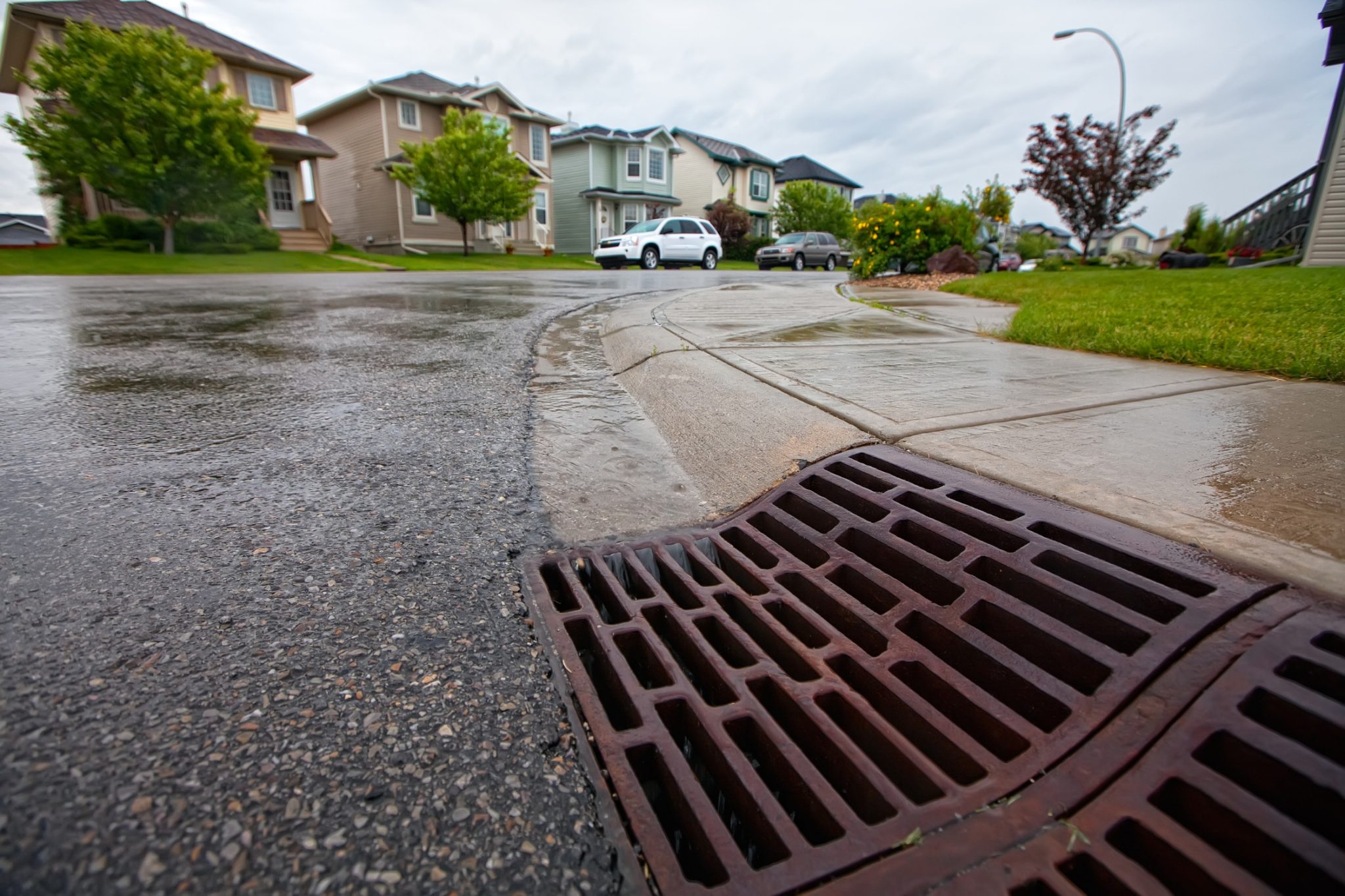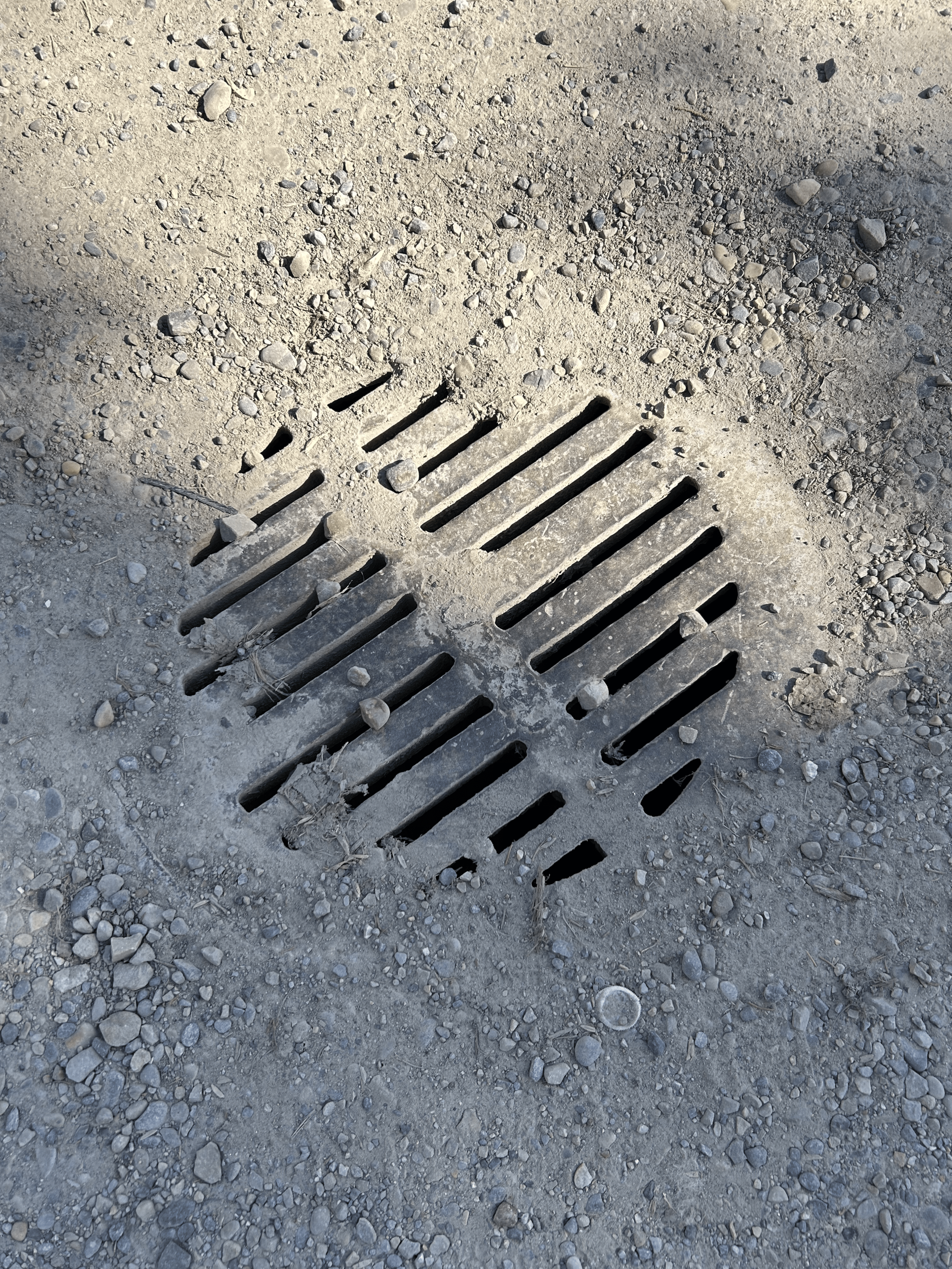Storm drains in Calgary
Help us respond more effectively!
Do you see water pooling on your street?
Check the map to determine the type of storm drain that exists in the area.
- Is the storm drain a red square? Contact 311 immediately.
- Is the storm drain a blue circle? Wait 90 minutes to two hours before contacting 311.
- Is water entering a building or vehicle, or is a safety concern? Contact 311 immediately.
Don’t forget to include a photo as this helps our crews respond on a priority basis.
What is a storm drain?
Storm drains (also known as catch basins) are the main way stormwater drains from our sidewalks and roadways into the underground pipes of our stormwater management system, and eventually to our rivers. Calgary has over 60,000 storm drains across the city.

Why does water pool on streets?
Our stormwater system manages most of the rain and snowmelt we experience every year, but it has a limited capacity and may be overwhelmed during severe storms or quick snowmelts.
After heavy rains
Following intense rains, temporary pooling of water (up to ½ metre or 1 ½ feet) is normal around many storm drains.
To manage capacity of the stormwater system during heavy storms, many streets in Calgary are designed to have a low point where water is temporarily stored on the street for up to two hours after the rain has stopped.
We also install inlet control devices in storm drains to manage how fast water flows into the pipes. They’re designed to prevent overland flooding by keeping water away from houses, garages and businesses and to avoid water backups into basements.
After quick snow melts
During the winter, our Chinook weather can melt the snow quickly turning inches of snow into puddles in a matter of hours. If storm drains are clogged with ice or snow it can lead to large puddles in the streets.

Click to enlarge image.

We do our best to make sure storm drains are doing their job. If storm drains are frozen and water is pooling on streets we use specialized boiler equipment that pushes out steam to get the storm drain thawed and running again.
We respond to 311 calls on a priority basis, attending first to areas impacting public safety and where excess water may cause property damage.
How you can help clear the storm drain during the winter months
- Check the storm drain near your home to clear it of debris (e.g. leaves, sticks), or remove ice and snow.
- If there’s a buildup of snow or ice and it’s safe to do so, create a channel to help water flow to the drain.
Protecting your home
There are many ways you can protect your home from water damage.
- Maintain positive drainage on your lot without impacting your neighbours or public property.
- Inspect grading around your foundation and fill any settling or depressions.
- Regularly clear debris from eavestroughs and downspouts.
- Ensure downspouts are pointed toward the street, lane or a swale and direct water a minimum of two metres away from sidewalks, pathways and building foundations.
- Keep any grassed or concrete swales on your property free from debris, ice, or obstructions.
- Maintain your sump pump. Ensure it discharges two metres from building foundations, and do not impact your neighbours or public infrastructure.
- When cleaning your yard keep leaves, grass clippings and any other yard waste away from storm drains.

Types of storm drains
Storm drains are often confused with other infrastructure. Let’s sort out which are storm drains and which aren’t.
Yes
Storm drains might look slightly different across the city, but they all have metal grates and are usually found along street curbs to capture storm water, from rain or snow melt.

Yes
Storm drains sometimes have sediment control devices like these orange socks to ensure that dust and debris from nearby construction sites don’t clog them.

Yes
Manholes that have grates are storm drains.

These are not storm drains
No
These are sidewalk grates that vent hot air to the outside from underground city infrastructure (e.g. electric wiring, gas lines).

No
This is a valve box (circled in red) that provides access to the irrigation system in a park.

No
Manholes like this without grates are underground inspection chambers that provide access to underground utilities like the wastewater sewer system and the stormwater system.

Protecting our rivers
Water entering our storm drains travels to Calgary’s rivers and streams without water treatment. Never sweep debris, dump chemicals down or use ice salt on storm drains.
Learn how to protect the health of our rivers

